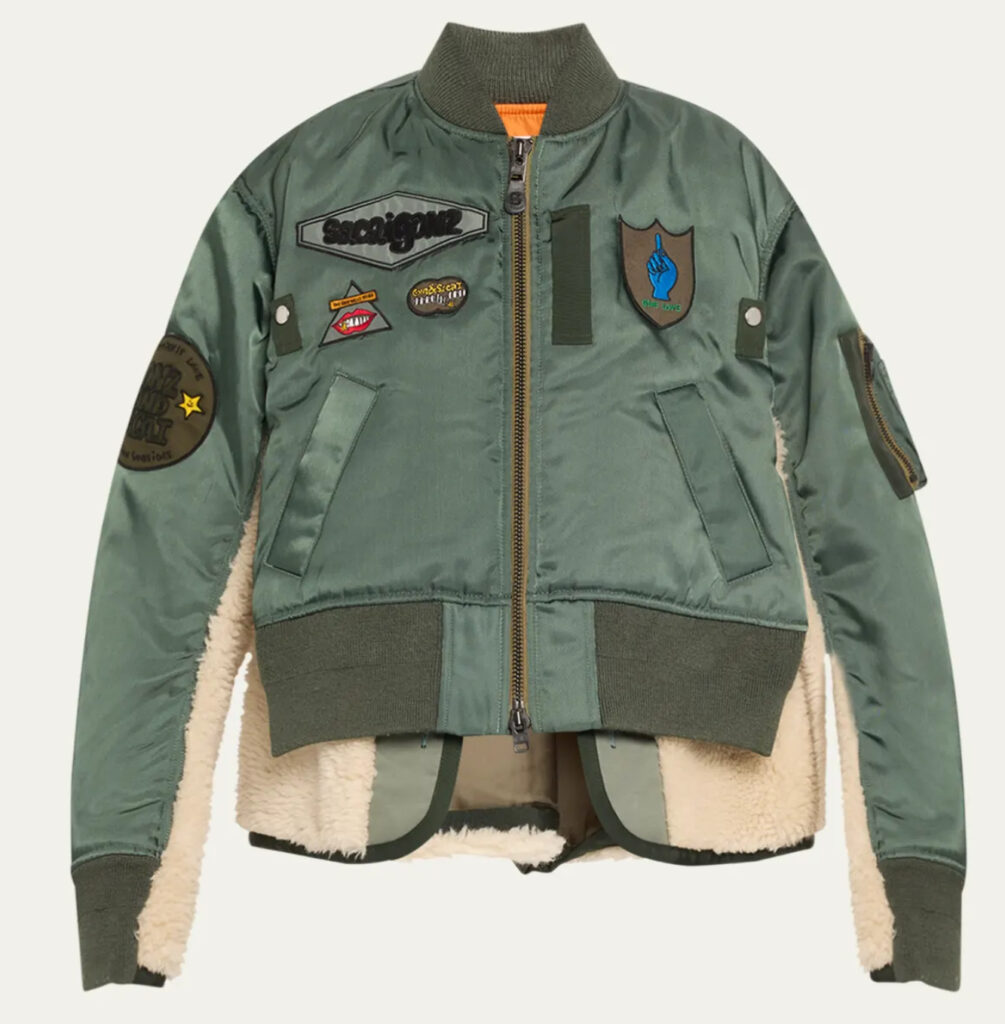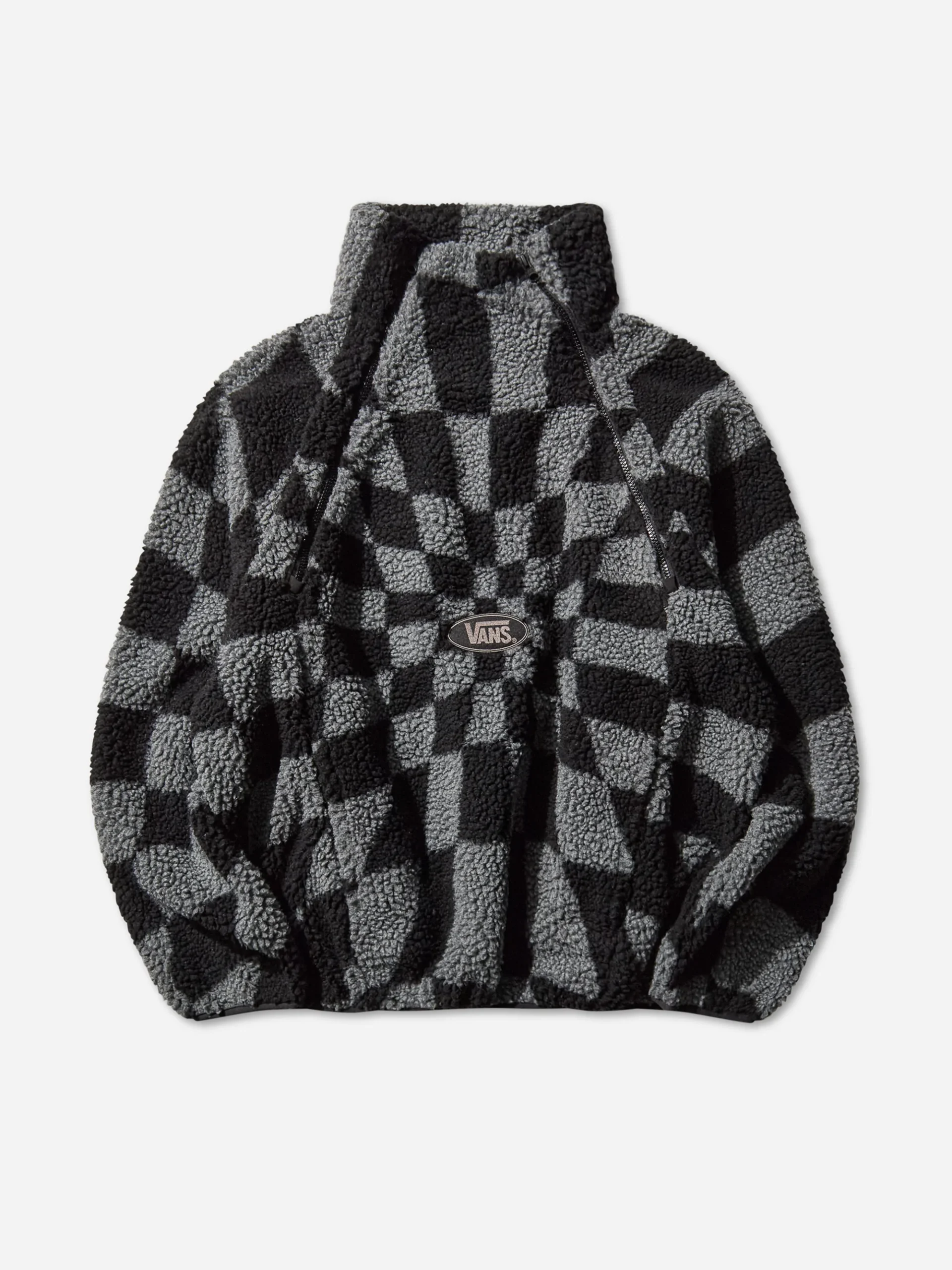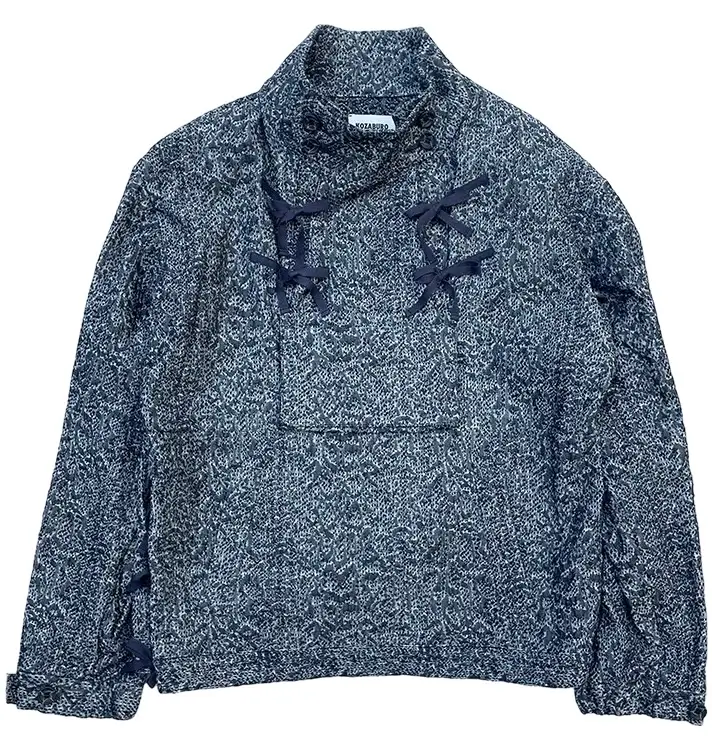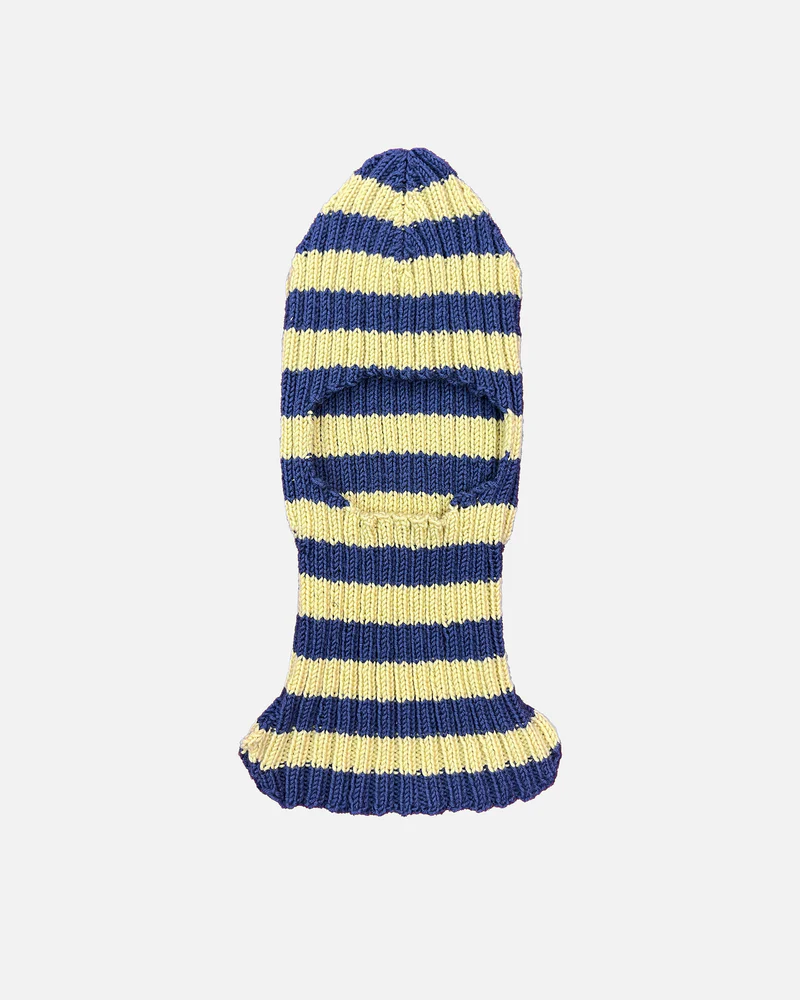In the shifting landscape of contemporary menswear, few brands manage to articulate the paradox of nostalgia and futurism as fluently as Sacai. Under the creative direction of Chitose Abe, Sacai has built an architectural language out of hybridity—garments that are part-uniform, part-deconstruction, part-personal artifact. This ethos reaches an apex in the Sacai x Spiewak Patch Nylon Shearling Jacket, a piece that simultaneously references the pragmatic codes of military outerwear and transforms them through Sacai’s idiosyncratic lens.
In spect, with the storied American outerwear manufacturer Spiewak, known for its durable jackets commissioned for U.S. military and police forces, Abe doesn’t merely borrow the brand’s visual grammar—she recontextualizes it. What results is not a remix but a philosophical gesture: a patchwork shell that resists final form, modular in construction and nostalgic in attitude.
The Spiewak Legacy and the Authenticity of Function
To understand the gravitas of this jacket, one must first consider Spiewak’s heritage. Founded in 1904 in Brooklyn, New York, I. Spiewak & Sons quickly rose to prominence supplying outerwear for laborers, fire brigades, and soldiers. The company’s reputation is rooted in utilitarian excellence—coats made not for runways but for survival.
This historical lineage becomes a conceptual backdrop for Sacai’s intervention. Where Spiewak stands for uncompromising pragmatism, Sacai introduces conceptual modularity. The collaboration functions as a dialogue between protection and projection, tradition and futurism.
Aesthetic Anatomy — Textile as Tectonic Terrain
The jacket’s composition reads like a cartography of material tensions: glossy nylon, rugged patchwork panels, and voluminous shearling cohabit a silhouette that refuses minimalism. The base is a military green, reminiscent of M-65 field jackets, overlaid with tonal contrasts in khaki, steel blue, and charcoal—creating the impression of a garment constructed over time, like layers of a battlefield uniform amended through lived experience.
The shearling collar, soft but imposing, offers both textural counterpoint and tactile warmth. It envelops the neck like a memory of aviator jackets from the WWII era, yet its placement feels decisively forward-looking.
Stitching is intentional, bordering on ceremonial. Each panel is shaped and positioned not for aesthetic conformity but for narrative interruption—a nod to kintsugi, the Japanese art of honoring breakage by sealing it with gold. Sacai treats asymmetry not as an eccentricity, but as an operating principle, embedding meaning in every incongruent seam.
Deconstruction as Function — A Modular Philosophy
In typical Sacai fashion, the jacket is more than a sum of fabrics. It represents a modular philosophy, complete with removable elements, adjustable volume, and convertible silhouettes. Zippers bisect portions of the jacket, offering fluidity in form. Sleeves unzip for ventilation or layering experimentation, and additional pocket flaps can be fastened shut or draped open, depending on the wearer’s mood or environmental need.
Rather than simply providing features, these elements encourage wearer agency. Much like techwear brands that push garments into the realm of adaptive design, Sacai’s jacket proposes a user-interfaced outerwear, reacting to lifestyle rather than dictating it.
This dynamic constructiveness also plays into the emotional tenor of the jacket. It’s not just gear—it’s a shell of self-determination in the age of algorithmic sameness.
Military Heritage, Recontextualized
Chitose Abe has long mined the military-industrial aesthetic for inspiration, but with the Spiewak collaboration, she emphasizes emotional militarism—the idea that uniforms, while designed for order, also carry the residue of those who wore them.
By repurposing elements like utility pockets, Velcro patches, reinforced elbows, and storm cuffs, Abe doesn’t romanticize conflict but eulogizes resilience. These are garments coded with the trauma, strategy, and endurance of real-life function—but reimagined as objects of personal empowerment.
And unlike the crisp uniformity of actual military jackets, Sacai’s version celebrates imperfection and adaptation. The patchwork hints at recovery, rehabilitation, and renewal. There’s an inherent survival narrative, not of war but of the contemporary psyche, anxious yet enduring.
Gender-Neutral Experimentation
While presented within the men’s collection, Sacai’s outerwear has always occupied a gender-fluid territory. The Spiewak Patch Nylon Shearling Jacket carries a universal structure—its voluminous body and abstract detailing appeal across identities.
In this way, the jacket challenges traditional masculinities. It invites a softness—through shearling, through curved contours, through its own lack of rigidity—that is rarely permitted in militarized garments. By combining codes of defense with hints of vulnerability, the piece proposes a new kind of strength, one unmoored from aggression.
Streetwear’s Evolution and the Intellectualization of Utility
The Sacai x Spiewak collaboration arrives at a cultural moment when streetwear is undergoing its own identity crisis. With logomania fatiguing and hype cycles accelerating, the appetite for depth—both historical and conceptual—has returned.
This jacket doesn’t chase virality. It resists mass readability, trading hype for hermeneutics. You don’t “get” the jacket at first glance. It asks you to live with it, to wear it through different seasons and mental states, to understand it as a wearable philosophy.
In many ways, it’s anti-streetwear by 2010s standards, yet it fits squarely into what comes next: the scholarship of style, where garments operate not just as adornment but as argument.
The Retail Rarity and Market Value
Priced in the higher tier of Sacai’s outerwear line (typically in the $1,500–$2,300 USD range depending on customization and fabric variation), the Patch Nylon Shearling Jacket was released in limited quantities globally. Select stockists such as Dover Street Market, SSENSE, END Clothing, and Sacai’s flagship in Aoyama, Tokyo received exclusive versions with unique patchwork configurations.
This rarity has only increased its allure on resale platforms like Grailed and StockX, where collectors view it not only as wearable but archival. Sacai’s collaborations are known to appreciate in value, particularly those that intersect with heritage labels like Spiewak.
But value, in this case, is not measured purely in currency—it’s in cultural weight and timeless modularity.
The Poetics of Outerwear in a Climate of Uncertainty
In an age defined by climate unpredictability, emotional precarity, and geopolitical flux, the outerwear we choose becomes more than a fashion decision—it becomes a strategic declaration.
The Sacai x Spiewak Patch Nylon Shearling Jacket isn’t just equipped for weather but for identity flux. It adapts, evolves, layers, and redefines. It is a poetic response to modernity’s demand for flexibility, a garment that doesn’t assume who you are, but allows you to arrive there.
As such, it fits within Sacai’s broader mission: to build clothes that move, morph, and mean. In this jacket, one finds the convergence of memory and modernity, form and formlessness, shell and sentiment.
Impression
If fashion in the 2020s is a language, then the Sacai x Spiewak Patch Nylon Shearling Jacket is its compound sentence—layered, asymmetrical, meaningful from multiple angles. It doesn’t seek to resolve its contradictions but to wear them proudly, to speak in dialects of function, style, and emotional armor.
In a sea of fast production and algorithm-fed uniformity, it’s a piece that demands attention not because it shouts, but because it listens to history and rearticulates it with care.
For those who view fashion not as trend but as personal cartography, this jacket is more than outerwear. It’s a narrative apparatus, waiting to be walked through streets, climates, and chapters.
No comments yet.








